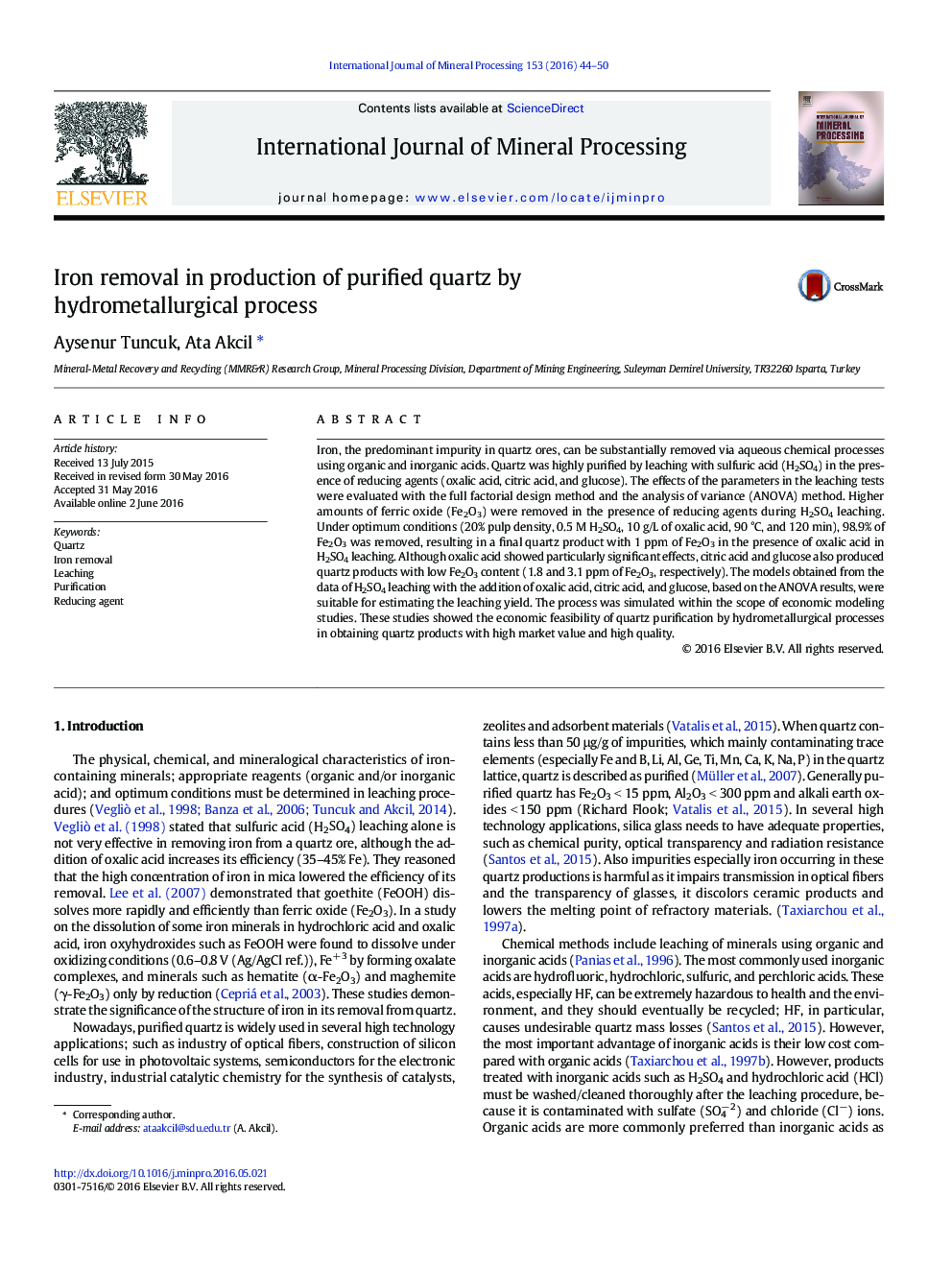| Article ID | Journal | Published Year | Pages | File Type |
|---|---|---|---|---|
| 213691 | International Journal of Mineral Processing | 2016 | 7 Pages |
•High-purity quartz (1 ppm Fe2O3 content) by using hydrometallurgical process•Reducing agents (oxalic, citric acid, glucose) were used to increase Fe2O3 removal.•By increasing the use of organic acids, harmful effects of H2SO4 can be reduced.•By using oxalic acid with H2SO4, environment-friendly process, higher efficiency•Economic modeling was performed by SuperPro Design Software to test feasibility.
Iron, the predominant impurity in quartz ores, can be substantially removed via aqueous chemical processes using organic and inorganic acids. Quartz was highly purified by leaching with sulfuric acid (H2SO4) in the presence of reducing agents (oxalic acid, citric acid, and glucose). The effects of the parameters in the leaching tests were evaluated with the full factorial design method and the analysis of variance (ANOVA) method. Higher amounts of ferric oxide (Fe2O3) were removed in the presence of reducing agents during H2SO4 leaching. Under optimum conditions (20% pulp density, 0.5 M H2SO4, 10 g/L of oxalic acid, 90 °C, and 120 min), 98.9% of Fe2O3 was removed, resulting in a final quartz product with 1 ppm of Fe2O3 in the presence of oxalic acid in H2SO4 leaching. Although oxalic acid showed particularly significant effects, citric acid and glucose also produced quartz products with low Fe2O3 content (1.8 and 3.1 ppm of Fe2O3, respectively). The models obtained from the data of H2SO4 leaching with the addition of oxalic acid, citric acid, and glucose, based on the ANOVA results, were suitable for estimating the leaching yield. The process was simulated within the scope of economic modeling studies. These studies showed the economic feasibility of quartz purification by hydrometallurgical processes in obtaining quartz products with high market value and high quality.
Graphical abstractThe highest amounts of Fe2O3 removed and whiteness index values obtained from optimum leaching conditions (OA: oxalic acid, CA: citric acid, GL: glucose).Figure optionsDownload full-size imageDownload as PowerPoint slide
